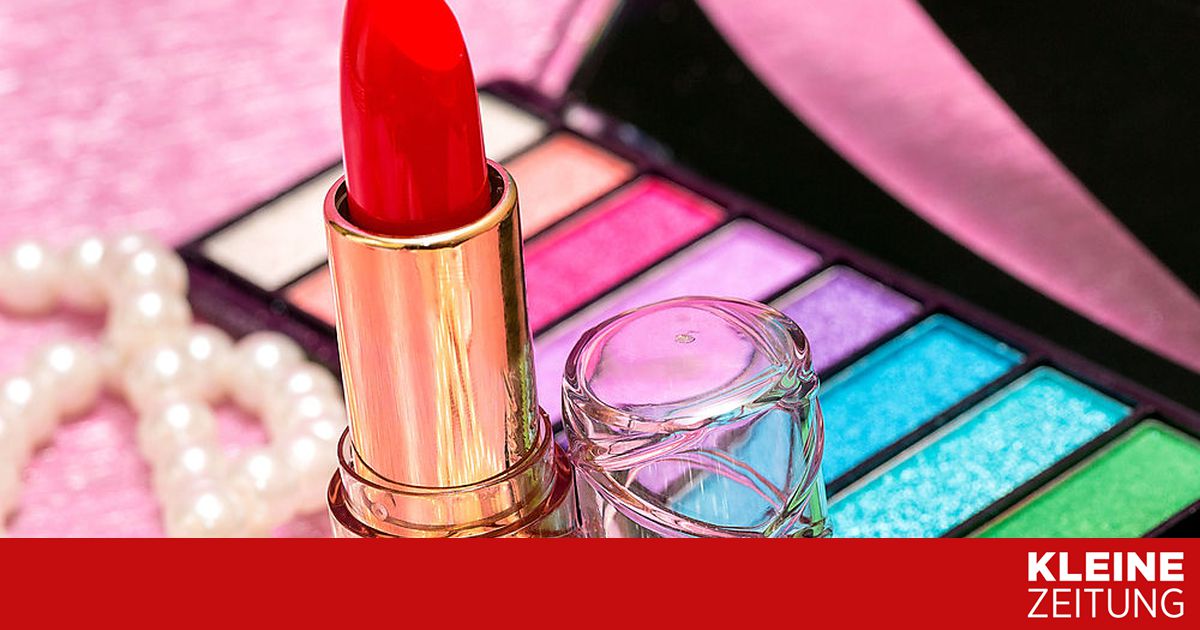Make-up, powder and lipstick: over 75 percent of cosmetics are contaminated with microplastics
Liquid, semi-solid or as microplastic: Greenpeace examined 664 products from well-known brands and found 75 percent of them.
8:22 a.m., March 22, 2021
Greenpeace once again looked around the world of cosmetics for a new report, and there Make-ups and lipstick by eleven well-known brands examined for plastics or microplastics. The result of the online research comprising 664 products: 502 articles and thus over 75 percent contained plastic – sometimes even if they are as “free from microplastics” were advertised. Once again, the NGO is calling for these questionable ingredients to be banned.
Research shows that plastic in the environment like a sponge soaks up the pollutants and the contaminated particles end up back in the human body via the food chain, wrote the NGO on the possible threats to health. In a broadcast on Monday, Greenpeace advocated that Environment Minister Leonore Gewessler (Greens) should promote a rapid ban on the use of solid microplastics as well as liquid, semi-solid and soluble plastics in cosmetics. The proposal at EU level is only a first step that needs to be improved and sharpened.
Microplastics not only in solid form
“Many manufacturers write on the packaging that their cosmetics are free from microplastics. What they fail to mention is that many of their products are liquid or semi-liquid plastic “ included, so the accusation of Lisa Panhuber, consumer expert at Greenpeace Austria. For these cosmetics manufacturers, microplastics are plastic in solid form, but not gel-like or waxy substances that cause shimmering effects or matting on the skin. The conclusion of the study was that of the 502 cosmetic products containing plastic, 162 (26 percent) contain microplastics.
“The most worrying finding from the investigation is that in the products that on sensitive areas of the body such as eyes and lips plastics (solid and non-solid) were the most common “, it says in the 25-page report” To remove make-up – plastic in cosmetics “. “The unvarnished truth is that we regularly smear plastic on our faces”noted Panhuber. Plastics were most frequently found in eye make-up (90 percent). Lipstick and lip gloss follow with 73 percent, makeup with 71 percent. Powder was the least likely to contain plastic, but it was still found in 51 percent of the articles.
Blood-brain barrier and human placenta
And according to the NGO, the plastic in cosmetics poses a multiple problem, not just that tiny parts can be swallowed: “What this means for our health has not yet been clarified. However, there are indications that the plastics in the form of microparticles or the even smaller nanoparticles also have highly selective barriers like the Crossing the blood-brain barrier and even the human placenta can.”
On average, a person ingests up to five grams of plastic per week, which corresponds to the weight of a credit card, warned the NGO, referring to a study published by WWF on the subject in 2019. And it doesn’t stop there, because in Germany alone around 330,000 tons of primary microplastics from various sources enter the environment every year.
